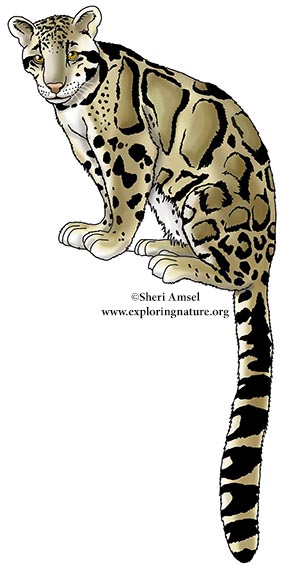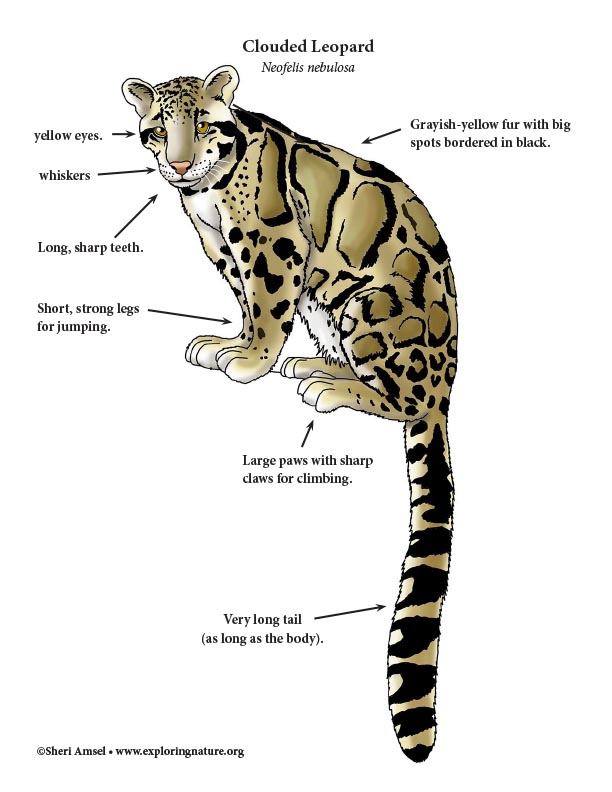

They are found in Asia - Southeast Asia, Borneo, Sumatra, Nepal, southern China and Thailand, though their range has decreased with habitat loss.
They live in the forest. In tropical ranges, they live in rainforest. In more temperate ranges they live in woodlands.
One of the smallest “big cats”, a male clouded leopard weighs up to 50 pounds – females are smaller. The tail is as long as the body reaching up to 3 feet long and they have short, strong legs for jumping. Their coat is grayish-yellow with big spots bordered in black.
They climb trees (arboreal) and spend much of their time perched on branches watching for prey below. They are amazing jumpers and are also known to be able to climb head first down tree trunks.
As carnivores they will eat any animal in their range including monkeys, deer, wild pig, and even birds.
They have few predators other than man and the loss of their forest homes.
Females are pregnant for slightly more than 3 months (gestation). They breed once a year and have up to 5 cubs per litter.
No one knows how long they live in the wild, but in captivity they can live more than 15 years. They are listed as "vulnerable".
Kingdom: Animalia
Phylum: Chordata
Subphylum: Vertebrata
Class: Mammalia
Order: Carnivora
Suborder: Feliformia
Family: Felidae
/Subfamily: Pantherinae
Genus: Neofelis
Species: Neofelis nebulosa
When you research information you must cite the reference. Citing for websites is different from citing from books, magazines and periodicals. The style of citing shown here is from the MLA Style Citations (Modern Language Association).
When citing a WEBSITE the general format is as follows.
Author Last Name, First Name(s). "Title: Subtitle of Part of Web Page, if appropriate." Title: Subtitle: Section of Page if appropriate. Sponsoring/Publishing Agency, If Given. Additional significant descriptive information. Date of Electronic Publication or other Date, such as Last Updated. Day Month Year of access < URL >.
Amsel, Sheri. "Leopard (Clouded)" Exploring Nature Educational Resource ©2005-2024. December 13, 2024
< http://www.exploringnature.org/db/view/Leopard-Clouded >

